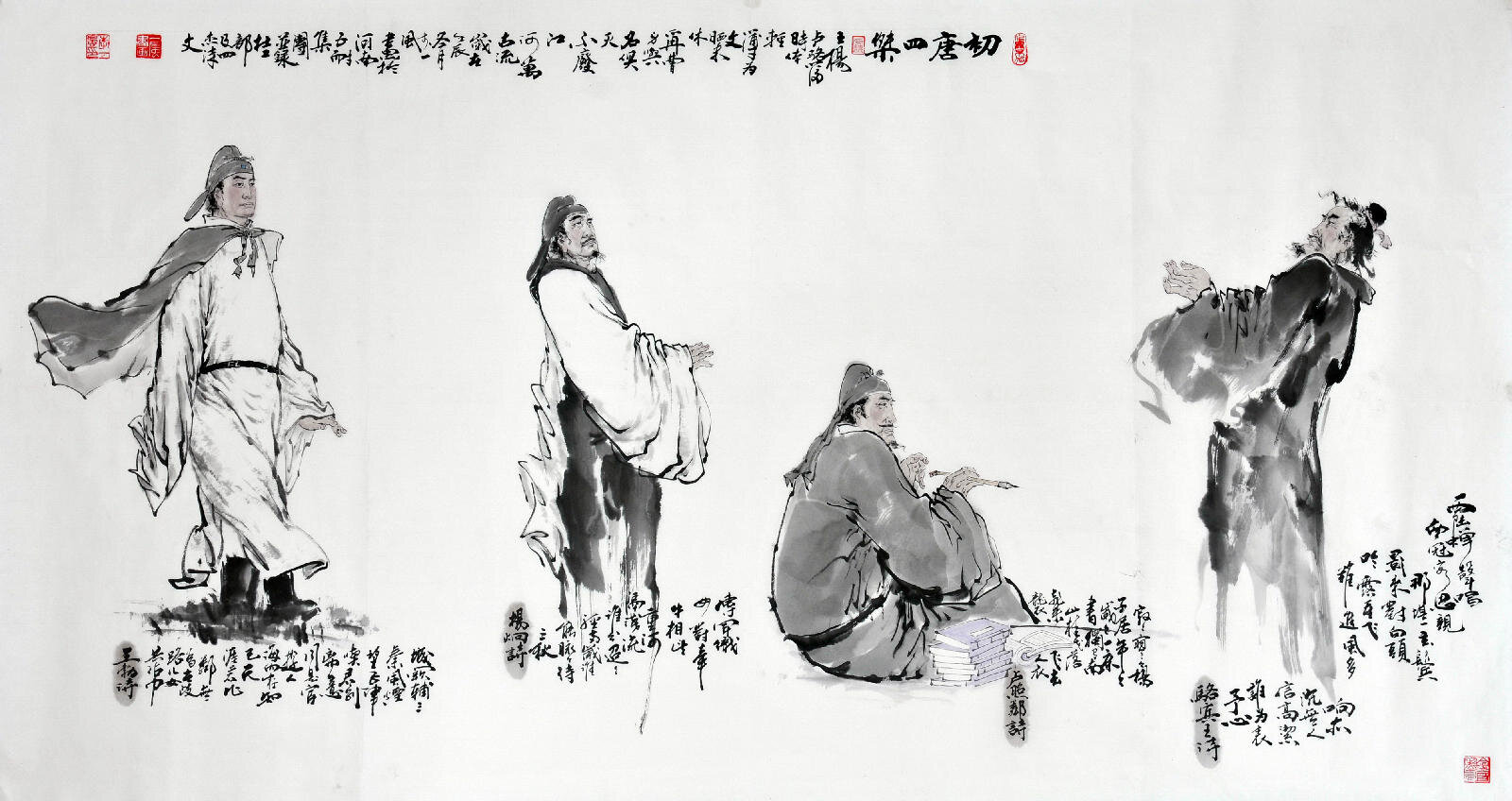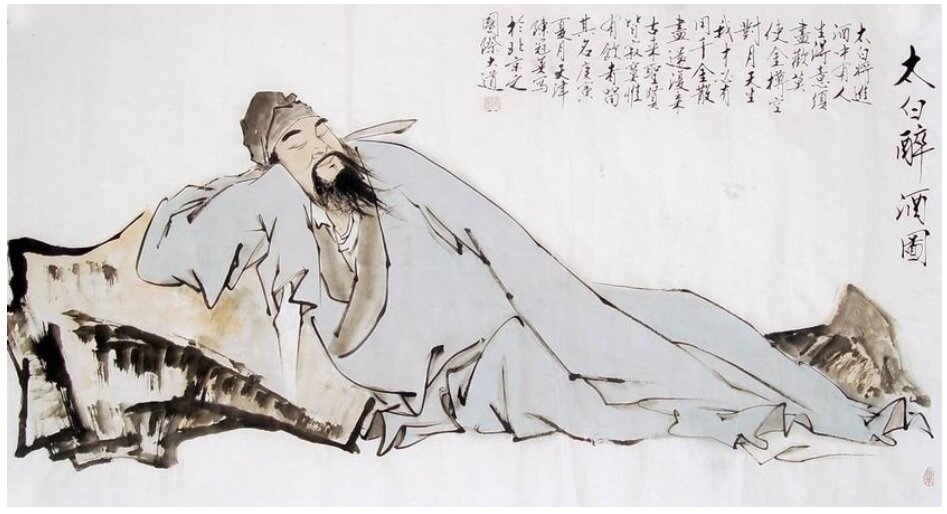Ep. 220 | The History of Tang Poetry (Part 3)
Finally, in this part 3 episode, Laszlo gets to the Tang poetry part of the series. After finishing up some of the good stuff that came out of the Six Dynasties, we’ll get a first look at the Early and High Tang periods. More poets and more great poetry compilations will also be introduced.
A lot of names and titles of works in this episode. Feel free to check the terms sheets down below in the Resources section and read up on some of them, in addition to plenty of links to translated works of Classical Chinese poetry.
If this series is piquing your interest, even a little, there’s a whole world out there for you to further explore.
Listen On Your Favorite Podcast Player
Terms in Episode
| Pinyin/Term | Chinese | English/Meaning |
|---|---|---|
| Bái Jūyì | 白居易 | Lived 772-846, great Tang poet and scholar-official. We'll get to him later in the series |
| Chū Táng | 初唐 | Early Tang, roughly 618 to 713 |
| Chū Táng Sì Jié | 初唐四杰 | The Four Paragons or Four Eminences of the Early Tang |
| Chǔcí Zhāngjù | 楚辞章句 | The definitive compilation of Cí poetry compiled by Wang Yi |
| Cuī Róng | 崔融 | 653-706, great poet during the time of Wu Zetian, compiler of the "Collection of Precious Glories" |
| Cí | 辞 | A form of poetry often translated as "lyric poetry" |
| Dù Fǔ | 杜甫 | One of the greatest poets in Chinese history, lived 712-770 |
| Dūnhuáng | 敦煌 | Ancient Silk Road town in Gansu where Aurel Stein made his great discovery in 1907 |
| Fù | 赋 | A type of Chinese epic poetry also referred to as a rhapsody |
| Guō Màoqiàn | 郭茂倩 | Compiler of the definitive anthology on Yuefu poetry. It contained almost 5,300 Yuefu poems. |
| Gāo Bǐng | 高棅 | The name associated with the compilation of the “The Graded Compendium of Tang Poetry” |
| gǔ | 古 | old or ancient |
| gǔshī / gǔtǐshī | 古诗 / 古体诗 | Confucian overtones…four to seven characters per line, an older style of poetry that preceded the modern "jinti" style |
| Jiàn’ān | 建安 | The final era of the Han Dynasty and final era of the final emperor. It ran from 196 to 220 |
| Jìn Dynasty | 晋朝 | Dynasty in China divided up into Western Jin 265–316 and Eastern Jin 317–420 |
| Jìntǐshī | 近体诗 | Jìntǐ just means modern form or modern style. And shī meant poem |
| Kāngxī | 康熙 | Qing emperor who reigned 1661-1722, a long time |
| Liáng Dynasty | 梁朝 | The third of the Southern Dynasties in the Northern Southern Dynasties Period |
| Liú Sòng | 刘宋 | 420-479, also known as Former Song, the first of the four Southern Dynasties |
| Luò Bīnwáng | 骆宾王 | c. 619-684, One of the Four Paragons of Early Tang Poetry |
| Lú Zhàolín | 卢照邻 | c. 634-684, another of the Four Paragons of Early Tang Poetry |
| Lǐ Bái | 李白 | One of the greatest poets and certainly the most famous one in China. Lived 701-762 |
| Lǐ Jiào | 李嶠 | Chancellor for Wu Zetian and her sons during the Tang dynasty, also known for his poetry |
| Lǐ Lōngjī. | 李隆基 | Personal name of the Tang Xuánzōng emperor |
| Lǐ Shāngyǐn | 李商隐 | 813-858 one of the greatest poets who lived during the late Tang |
| lǜshī | 律诗 | Regulated verse poem |
| Mèng Hàorán | 孟浩然 | 689/691-740 Tang poet, right up there with the greatest of them all |
| Mògāo Caves | 莫高窟 | The Mogao Caves of Dunhuang, Gansu where so many great discoveries were made. |
| Nánběi Cháo | 南北朝 | The Northern and Southern Dynasties, 386-589 |
| Qiánlóng | 乾隆 | 6th emperor of the Qing Dynasty, reigned 1735-1796, so of Yongzheng, grandson of Kangxi |
| Quán Táng Shī | 全唐诗 | “Complete Book of Tang Poetry”. |
| Qī | 七 | Seven |
| qīlǜ | 七律 | The seven character per line poem |
| Qū Yuán | 屈原 | Earliest composer of Cí lyric poetry. Lived 340-278 BCE during the Warring States Period |
| Ruìzōng emperor | 唐睿宗 | Tang emperor, reigned 684-690, son of Wu Zetian |
| Shèng Táng | 盛唐 | The High Tang period of poetry |
| Shěn Yuē | 沈约 | Chinese poet, statesman and historian who lived 441-513 |
| Shījīng | 诗经 | The Book of Odes, Book of Songs, the Classic of Poetry |
| Song Dynasty | 宋朝 | Chinese dynasty that ran 960-1279, both Northern and Southern Song |
| Southern Qí | 南齐 | 479-502, second of the Southern Dynasties in China, lasted 23 years |
| Sānjué | 三绝 | The Three Perfections…combining painting, Poetry and calligraphy into one single work. |
| Sāo Poetry | 骚 | Another name for Ci poetry, derived from Qu Yuan's poem Li Sao |
| Sūn Zhū | 孙洙 | Editor and compiler of the 300 most important Tang poems (see above) |
| The Zhūyīng Jí | 珠英集 | “Collection of Precious Glories.” |
| Táng Shī Pǐnhuì | 唐诗品汇 | “The Graded Compendium of Tang Poetry.” Contained 5,769 poems from 620 Tang poets |
| Táng Shī Sānbǎi shǒu | 唐诗三百首 | “Three Hundred Tang Poems" |
| Wáng Bó | 王勃 | 650-676, One of the Four Paragons of Early Tang Poetry |
| Wáng Wéi | 王维 | Another one of the greatest Tang poets. Lived from 699-759, a contemporary of Li Bai and Du Fu |
| Wáng Yì | 王毅 | Han era librarian and scholar known for his work on the poetry anthology Chu Ci. |
| Wén Xuǎn | 文选 | “Selected Works of Literature” |
| Wúzhōng Sìshì | 吴中四士 | Four Gentlemen of Wúzhōng |
| Wǔ | 五 | Five |
| Wǔ Zetiān | 武则天 | Also known as Empress Wu, the only woman to rule China as emperor in her own name |
| Wǔyán | 五言 | Five characters |
| Wǔyán lǜshī | 五言律诗 | Five characters per line, eight-lines….regulated verse |
| Xiān Qín Hàn Wèi Jìn Nánběi Cháo Shī | 先秦汉魏晋南北朝诗 | The most exhaustive work of its kind for that pre-Sui Dynasty period |
| Xiāo Gāng | 简文帝 | Better known as the Liang Emperor Jiǎnwén, son of Liang emperor Wǔ and brother to Xiāo Tǒng |
| Xiāo Tǒng | 萧统 | Eldest son of Liang founding Emperor Wǔ reigned 502-549, compiler and editor of the "Selected Works of Literature" |
| Xuánzōng | 玄宗 | 685-762, also known as Emperor Ming of Tang, reigned 690-705, a total of 43 years |
| Xú Líng | 徐陵 | 507-583, compiler and editor of the "New Songs From the Jade Terrace" |
| Yuán Dynasty | 大元朝 | Dynasty, founded by Kublai Khan, in China 1271-1368 |
| Yuè Fǔ | 乐府 | Music Bureau and Yuèfǔ poetry |
| Yuèfǔ Shījí | 乐府诗集 | “Collection of Music Bureau Ballads,” see below |
| Yáng Jiǒng | 杨炯 | c. 650-695, One of the Four Paragons of Early Tang Poetry |
| Yùtái Xīn Yǒng | 玉台新咏 | “New Songs from a Jade Terrace" |
| Zhāng Yuè | 张说 | 663-730, Tang era chancellor and great literary figure in his time. |
| Zhūlín Qīxián | 竹林七贤 | The Seven Sages of the Bamboo Grove |
Resources
Podcasts/Music
The Chinese Literature Podcast by Robert Moore & Lee Moore
The Sinica Podcast by Kaiser Kuo & Jeremy Goldkorn
The Last Tribe on Earth by Anthony Tao & Liane Halton - A wonderful combination of music and poetry by two talented artists.



































Along with Li Bai, discussed last episode, Du Fu is considered one of the greatest poets in Chinese history. We’ll take a brief look at the rough road Du Fu had to walk most of his years. In addition to looking at his life we’ll hear a few of his regulated verse poems.